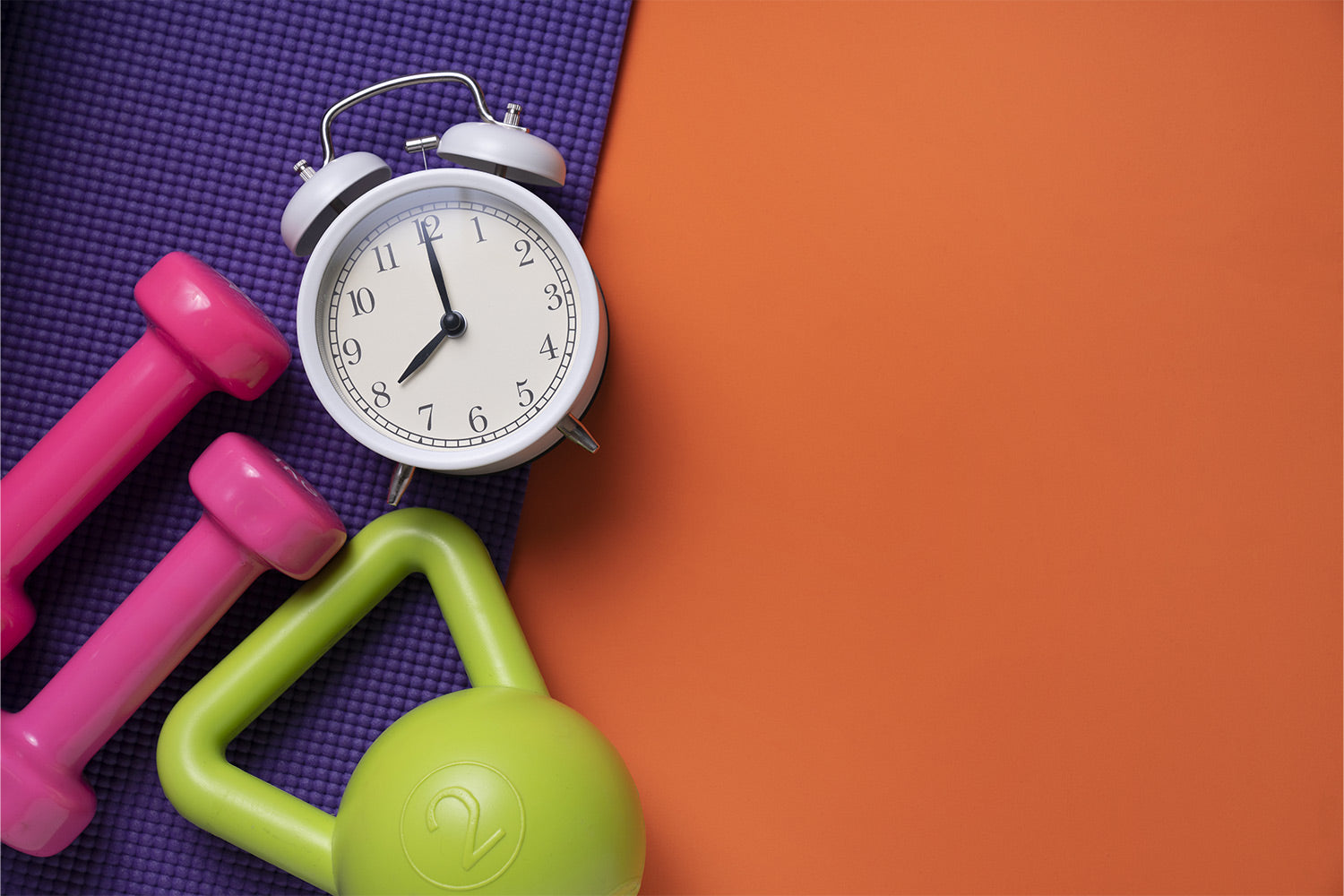Too much of a good thing can be bad, and exercise is no exception to that rule.
While regular exercise is crucial to supporting your overall health, it is only the tip of the iceberg for your fitness journey. In fact, by focusing on exercise alone, you’re actually diminishing your potential to achieve results.
An often overlooked aspect of fitness and exercise is recovery. Without it, you may increase your risk of muscle strain and overtraining. The result? No results at all. Overtraining and a lack of recovery can lead to various negative outcomes, such as injury and nonexistent results.
So how much should you exercise? Check out our guide on how to limit your workouts and increase your results.
Drawbacks of Overtraining
If your goal is to lose weight or build muscle, it may seem like working out as hard and long as possible is your best bet. However, this approach hurts more than it helps. Overtraining can lead to such symptoms as:
- A profound feeling of fatigue
- Energy loss
- Chronic colds, infections, and other illnesses
- Insomnia
- Weight gain
- Stamina decline
- For women, a loss of their period (amenorrhea)
Overtraining can also lead to such injuries as chronic tendinitis and stress fractures. You need to stay healthy to get healthy, so make sure you’re listening to your body.
How Do You Avoid Overtraining?
The only way to fully understand your limits is to listen to what your body is telling you. If you’re dizzy, faint, or experiencing pain, take that as a sign to cease exercise. Furthermore, make a note of what led to those symptoms and make adjustments for your next workout. Were you pushing yourself too hard? Was the weight too heavy? Did you not drink enough water?
Factors such as diet and exercise can also play a major role in overtraining. When your body doesn’t have the fuel it needs to perform, you may not be able to push it to its normal limits. Ensure that you eat a nutritious pre-workout meal and consume plenty of water before, during, and after your workouts.
Another fantastic way to prevent overtraining is to stick to a detailed plan and count your reps. Overtraining can often happen as a result of training aimlessly.
How Much Should You Exercise?
Everyone’s body responds to stress differently; however, it is recommended that you incorporate one to two recovery days between each of your strength training sessions. This is your best bet to prevent overtraining and allow your muscles to grow.
Simply put, muscle growth occurs when damage is inflicted on the muscle fibers. This is achieved by engaging in resistance training and high-intensity interval training (HIIT), such as with the Ski-Row Air or the Ski-Row Air + PWR machines by EnergyFit. When your muscles respond to this trauma, they grow bigger and stronger. This process happens while you’re at rest, not while you’re working out.
Therefore, the recovery days are actually some of the most important days in your workout regiment. Without incorporating ample recovery, you’re not allowing your muscles ample time to grow. Furthermore, working out without proper recovery will diminish your energy levels. Going into a workout without full energy can result in poor performance, thus limiting your ability to achieve results and possibly leading to rapid fatigue, nausea, and injury.
All in all, it is advisable to get at least one day of recovery in between workouts. Those recovery days don’t have to be completely sedentary, though. In fact, they shouldn’t be. Active recovery is a crucial aspect of achieving your results.
What Is Active Recovery?
Active recovery is the practice of performing low-intensity workouts in between your regular workouts. In addition to preventing delayed onset muscle soreness (DOMS), keeping your muscles moving on “rest” days can provide the following benefits:
- Reduce lactic acid buildup in the muscles
- Eliminate toxins
- Keep muscles flexible
- Reduce soreness
- Increase blood flow
- Help you maintain your exercise routine
Active recovery does not necessarily have to be a workout in and of itself. Your ideal active recovery depends entirely on your body and your needs. The best way to gauge how intense your active recovery should be is the “talk test.” If you can hold a steady conversation while doing the activity, it is probably the right level of intensity for your active recovery (30-60 percent of your active heart rate).
While competitive runners may find that jogging is an efficient form of active recovery, more average athletes can find just as much benefit in walking or swimming.
Putting It All Together
Exercise is a great thing; however, exercising too much can result in injury and diminished results. That’s counterintuitive to an active individual such as yourself! To maximize your gains, you must listen to your body and allow yourself ample time to recover.
As a general rule of thumb, give yourself one to two rest days between workouts. This will ensure your muscles have ample time to grow, and your energy levels are primed for your next workout.
It is also important to consider such factors as diet and hydration. By neglecting these crucial aspects of your health, you’re depleting your body of the resources it needs to perform at its highest level. As a result, overtraining can occur even quicker.
Your fitness goals are within your reach. Check out EnergyFit to see how we can help your journey!
Sources:
Active Recovery Workouts: What To Do On Your Rest Day | NASM
How do muscles grow? | University of New Mexico
A meta-analysis to determine the dose-response for strength development | NCBI
Signs That Exercise Is Actually Hurting Your Health | Cleveland Clinic




Leave a comment
All comments are moderated before being published.
This site is protected by hCaptcha and the hCaptcha Privacy Policy and Terms of Service apply.